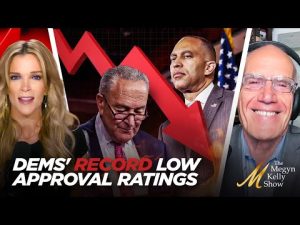**Big Trade Deal Announced Between the U.S. and Europe: What It Means for Everyone**
This past weekend, a major trade announcement took center stage as the United States and the European Union (EU) struck a deal that could change the dynamics of global commerce. As two of the largest economic regions in the world, only eclipsed by China, their agreements carry significant weight. The new trade deal includes a 15% tariff on imports from Europe into the U.S. and a promise from the EU to buy a whopping $250 billion worth of energy products annually from American producers. But what do these tariffs and commitments really mean for consumers, businesses, and the markets?
First off, let’s break down the implications of that 15% tariff on European imports. While some critics interpret the lack of reciprocal tariffs from Europe as a sign of weakness—or perhaps a concession—the reality is more nuanced. Why would Europe impose additional tariffs and risk raising prices for its own consumers and businesses? It seems Europe doesn’t want to engage in a trade war that could end up hurting themselves as much as it would hurt the U.S. After all, a prosperous trading relationship often benefits both sides, and increasing tariffs could just send consumers scrambling for alternatives or using their wallets in new ways.
Furthermore, Germany, the powerhouse of Europe, has a lot at stake when it comes to this deal. The automotive industry is a cornerstone of the German economy, supporting jobs and national standings in global markets. By agreeing to the same 15% auto tariff that Japan received, Germany avoids disadvantaging its own manufacturers like Mercedes, Volkswagen, and Audi. These companies are pivotal not only for their economic contributions but also for the “soft power” they represent on the global stage. Keeping their automotive sector strong does wonders for Germany’s GDP and international leverage.
As for who is actually footing the bill for these tariffs? Recent studies from Deutsch Bank and Citibank have revealed that American businesses are currently absorbing about 60% of the tariff costs by squeezing their profit margins. In simpler terms, American companies are eating these costs, effectively postponing price hikes for consumers. However, as inventories built before these tariffs run low, companies will have less choice but to pass some of these costs onto consumers. This could mean that shoppers might soon find themselves paying more at the cash register at places like Walmart or Amazon.
Unfortunately, consumers can’t celebrate these lower prices for long. While it might sound nice for now, there’s a catch. As profit margins compress, companies will likely need to lay off workers to maintain profitability. Corporate America typically prioritizes shareholders’ interests, and when profits slip, layoffs may be the painful remedy they choose. Even if consumers are dodging immediate higher prices, they might ultimately bear the brunt of the costs through job losses, particularly if they are involved with the publicly traded companies most affected by these tariffs.
Finally, let’s take a quick peek at the upcoming Federal Reserve meeting this week. While all signs point to keeping interest rates steady, there may be dissent on the board. One member is likely to advocate for an interest rate cut, perhaps positioning themselves for the next chance at being the Fed chair under a new administration. It’s a bit of a political game that underscores the increasing partisanship within the Federal Reserve. Whether or not that dissent leads to significant changes remains to be seen, but it emphasizes the shifting landscape of monetary policy in the U.S.
In summary, the trade deal between the U.S. and the EU opens a new chapter in international commerce, with potential benefits and pitfalls for consumers, businesses, and markets alike. As America navigates toward a new era of tariffs, all eyes will be on how these policies unfold in the coming weeks—and how the Federal Reserve reacts to the evolving economic landscape. Buckle up; it promises to be an interesting ride!







